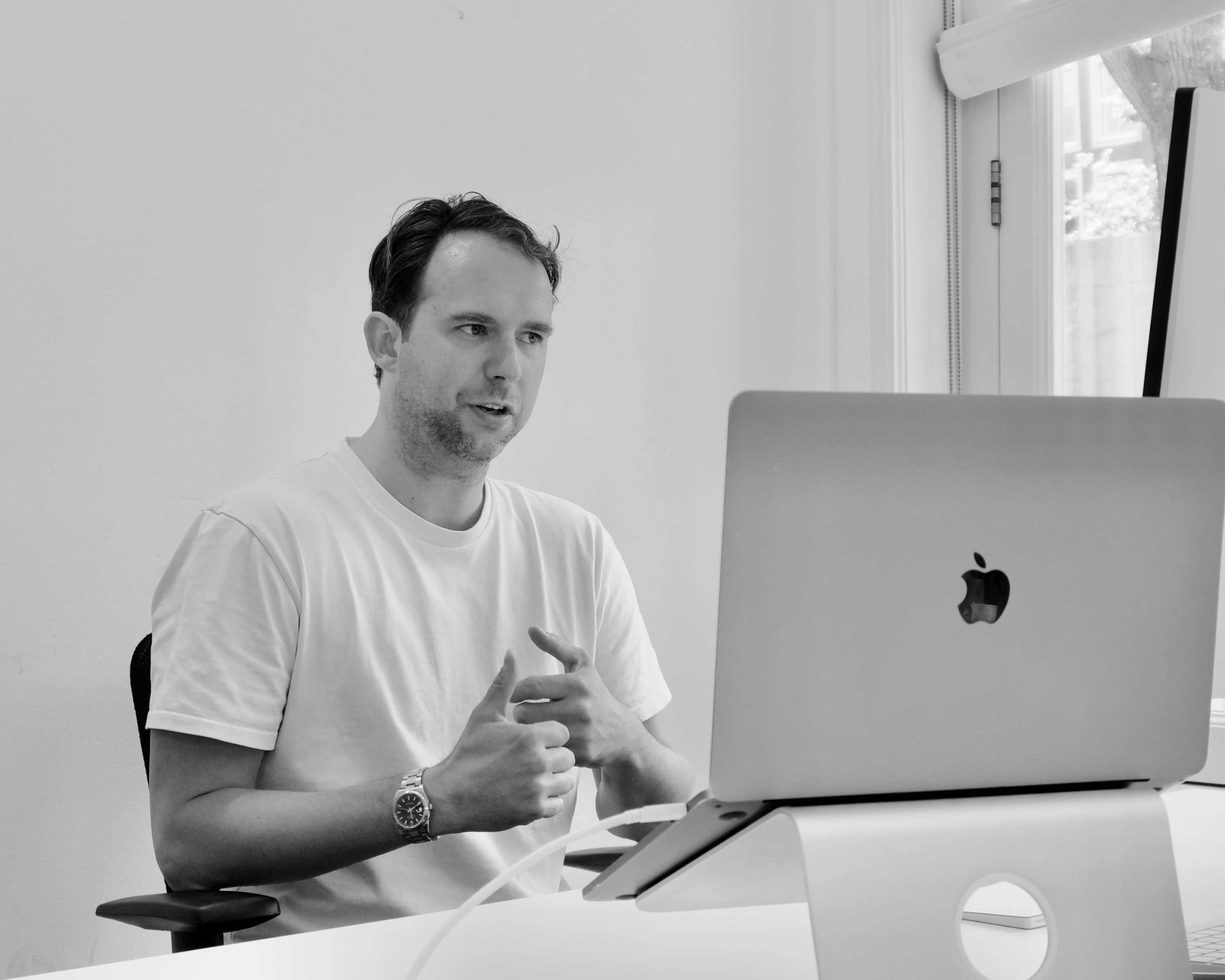3 Practical pension management problems and solutions for HR managers
Pension management is an important topic for HR managers. Not only because it offers employees financial security, but also for attracting and retaining talent. Many HR managers face a number of practical problems with regard to pension management. In this blog, we discuss the main challenges and offer practical solutions for a future-proof pension policy.
1. Pension as an attractive and flexible employment condition
In a tight labor market, pensions are a strategic tool for attracting and retaining talent. Employees have diverse expectations, depending on their age, financial situation and personal goals. Employers must therefore ensure that they offer a pension plan that is both attractive and flexible.
Many traditional pension schemes offer little room for customization, while employees increasingly need more control and freedom of choice. Creating a future-proof and flexible pension policy is therefore an important challenge for HR managers.
How do you give your employees the flexibility they expect? And how do you ensure that they really value their pension, since this is often seen by younger employees as something that is 'not relevant to me.' These are questions that HR managers face.
2. Cost control for employers
Managing the costs of pension schemes is a challenging issue for employers. Collective schemes can put a heavy strain on an organization's financial resources, while flexible third pillar solutions offer more customization. Determining a fair and feasible employer contribution without affecting business results also remains a delicate balancing act. HR managers must strike a balance between offering attractive pension benefits and safeguarding the organization's financial capacity. Whether it concerns collective pension schemes or individual third pillar options, insight into costs and smart choices are essential.
A frequently asked question is: "how do I calculate the correct contribution for pension?" This depends on the chosen pension scheme and the financial capacity of your organization:
- Collective schemes: Employers usually contribute 60%-70% of the total premium. This percentage is often determined by collective labor agreements or pension funds. But if this is not the case, you are in principle free to choose as an employer. Yet the standard is then maintained.
- Flexible schemes (third pillar): You can implement this in any way that makes sense to you as an employer. Contribute a fixed amount per employee, contribute nothing, or apply a percentage match. For example: you match 50% of the employee's own contribution, up to a maximum of €1,000 per year.
Practical example: For an employee with a pensionable salary of €40,000 and a contribution rate of 20%, where the employer contributes 60% of the contribution, the calculation is:
Employer contribution = €40,000 × 0.20 × 0.60 = €4,800 per year.
By using a clear calculation method, you can make contributions predictable and manageable for your organization.
Another question we often hear is, “can I adjust the contribution later based on what happens within my organisation?” And to that, we say a resounding yes. At least, within a third pillar pension, the contribution from the employer is optional. So if things are a little less good, or better, you can simply adjust the contribution. However, you must then explain this adjustment to your employees.
Unfortunately, such adjustments are not possible within a collective scheme, or at least, they are difficult. An employer who wants to implement changes to a pension agreement must have the approval of the employees. An employer is only allowed to unilaterally adjust the pension scheme in exceptional situations, with a significant interest in the proposed change. So this is less flexible, and if you as a startup or scale-up do not have the financial capacity for this, it becomes difficult, because pensions must be paid.
3. Administration
Managing pension schemes often involves a significant administrative burden. HR managers must not only calculate premiums and coordinate with pension funds or insurers, but also ensure clear communication with employees. With collective pension schemes (second pillar), employers are often responsible for paying premiums and managing the administration. With third pillar solutions, this burden lies more with the employee, but HR remains involved in informing and guiding employees. This requires a good balance between efficiency and clarity.
When managing pension schemes, it is not only important that employers understand their contributions properly, but also that employees know how they can actively contribute to their pension themselves. This often raises the question: how does an employee calculate their own contribution?
Employees can calculate their own contribution by following these steps:
- Check your pensionable salary: This is your gross salary minus the AOW (state pension) franchise.
- Calculate your contribution: Determine a percentage or fixed amount that you want to contribute, depending on your financial possibilities. Never contribute more than you can afford to miss. It is therefore useful to start small and build up.
- Consider matching: See what your employer contributes. With a percent matching, you benefit from extra pension accrual on top of your own contribution.
Practical example: An employee with a pensionable salary of €40,000, who then contributes 20% of their salary, ultimately puts €4,000 into the pension pot. With an employer match of 50%, the employer adds another €2,000 (if they do not specify a limit). Own contribution = €40,000 × 0.20 = €4,000 per year, and receives an additional €2,000 from the employer.
By making these calculations transparent, employees are encouraged to actively contribute to their pension accrual. Remember, of course, that your contribution now comes from your net salary - and you will get the taxes back later, in the summer.
Of course, as an HR manager, you are already aware of these problems. But how can you solve them now? Read on to find out.
How do you solve these problems as an HR manager?
Addressing the challenges surrounding pension management requires a strategic approach. Here are targeted solutions that address the three main problems: attractive employment conditions, cost control and administrative burdens.
1. Make pension attractive and flexible
Employees expect more control and freedom of choice in their pension schemes. By making pensions attractive, you not only strengthen the confidence of your employees, but also improve your employer image.
- Personalise pension schemes: Allow employees to choose between fixed or variable benefits and offer flexibility in contribution options, so that the scheme aligns with different life stages.
- Encourage participation: Consider percent matching or flat rate contributions. For example, match employee contributions up to a certain maximum. This shows that you as an employer are investing in their future.
- Communicate clearly: Inform employees during onboarding and evaluations about the benefits of pension schemes and how they contribute to their financial security.
2. Cost-effective management
Cost management is about transparency and smart choices, so that you as an employer find a balance between attractive pension options and financial sustainability.
- Set clear limits: Define a fixed percentage or a maximum for employer contributions to ensure predictability.
- Utilize tax advantages: Take advantage of the deductibility of premiums and other schemes to limit net costs.
- Flexibility for the employer: Choose a third-pillar solution that offers the flexibility to adjust contributions, for example with a temporary pension freeze in economically challenging times.
3. Reduce administrative burdens
Efficiency in administration not only saves time, but also prevents errors and misunderstandings that can damage confidence in the pension policy.
- Automate processes: Use digital tools such as pension portals that allow employees to view and manage their accrual themselves.
- Share the responsibility: Encourage employees to actively manage their pensions and offer them training on online tools.
- Work with experts: External advisors or administrative partners can simplify complex schemes and unburden the process.
Why this works
With a strategic approach, you as an HR manager can turn practical problems into opportunities. By offering customization, managing costs smartly and organizing administration efficiently, you strengthen the trust and engagement of employees. At the same time, you lay the foundation for a future-proof and effective pension policy.
From complex problems to effective HR solutions
Pension management is a complex part of HR management. It not only offers financial security for employees, but also plays a key role in attracting and retaining talent. As discussed in this blog, HR managers face challenges in the areas of attractive employment conditions, cost control and administrative efficiency.
By focusing on customization, smart cost strategies and streamlined processes, these challenges can be turned into opportunities. Implementing flexible pension options, using digital tools and involving external experts not only helps to reduce the workload, but also strengthens employee trust and satisfaction.
A future-proof pension policy shows that organizations not only have an eye for the needs of today, but also for the financial future of their employees. HR managers play a central role in this, and with the right approach they can contribute to a strong employer brand and sustainable business operations.
Invest in a strategic retirement policy that fits the needs of your employees and organization. The right choices today lay the foundation for a stable and successful future.

maak een afspraak
Klaar voor een moderne oplossing voor pensioen of vermogen? Maak vrijblijvend kennis met Vive en ontdek wat kan - voor jouw organisatie.
Complex pensioen, simpel uitgelegd - weet direct waar je staat
Persoonlijk gesprek voor jouw situatie en die van je werkenemers
In 30 minuten meer duidelijkheid dan uren googlen
Alle ruimte voor vragen aan onze ervaren pensioenexperts









